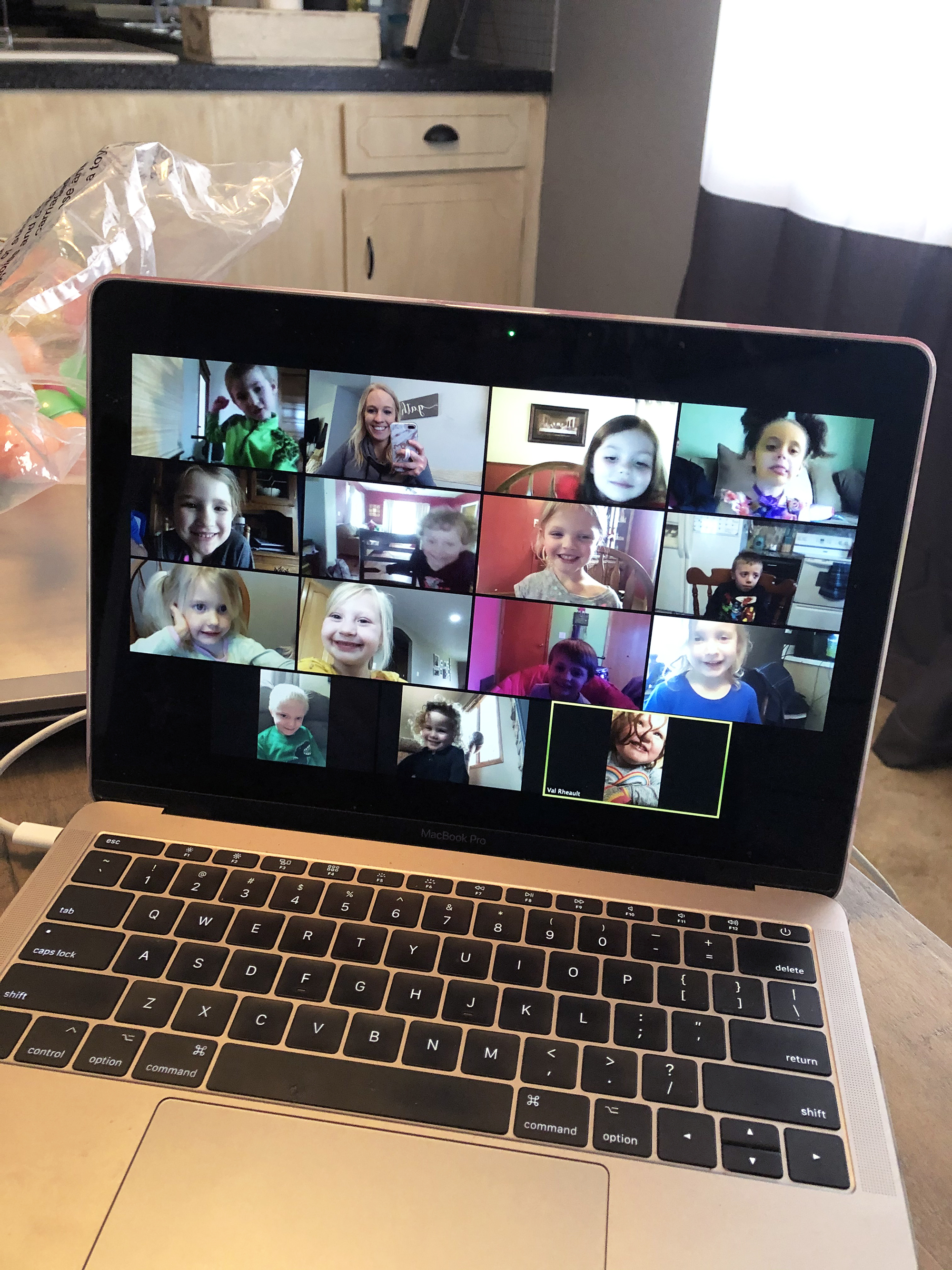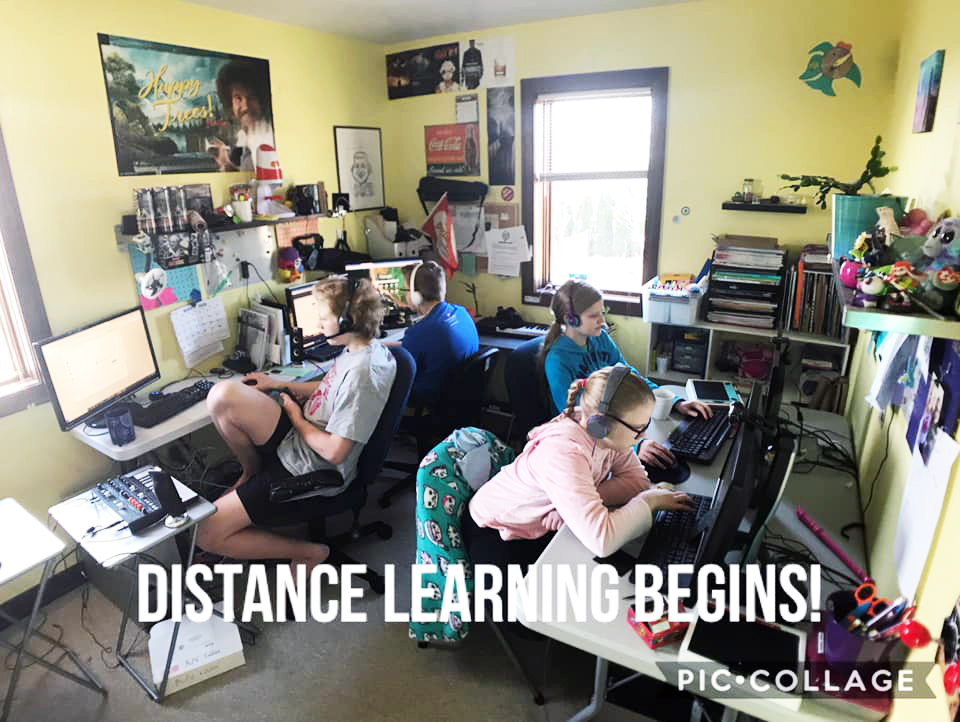 ,
, 
Last week Luverne High School freshman Ashlyn Johnson sang her classroom assignment on her choir teacher’s deck.
“She even played the piano for me,” said the daughter of Jim and Heather Johnson of Luverne.
Instructors like LHS choir teacher Seana Graber resumed teaching online March 30, after completing a nine-day transition from face-to-face instruction to at-home distance learning.
The transition was mandated after schools closed March 16 to avoid the spread of the coronavirus. Distance learning continues through May 4.
Graber organized choir assignments using an app called FlipGrid.
Students like Johnson record themselves performing the assignments, much like Johnson’s brother Ryker, a seventh-grader, did for band teacher James Jarvie.
For Ryker, completing the assignment was easy.
“I record myself playing the assignment and save it to Smart Music for Mr. Jarvie to view,” he said.
Local teachers have turned to various apps like FlipGrid for individual assignments but some apps allow for group participation.
Hills-Beaver Creek preschool teacher Macy Ellingson used the videoconferencing app called Zoom with her 14 Little Patriot students on April 2.
“Everyone got to say ‘Hi, friends’ and the rest of the kids waved to them,” Ellingson said. “This is similar to what we do at circle time in the classroom.”
Most teachers like Ellingson are instructing from home, conducting lessons, answering student email questions or preparing future lessons.
The halls in the normally busy schools in Luverne, Hills and Beaver Creek are empty, but H-BC Superintendent Todd Holthaus notes learning is taking place.
“School is not closed,” he said. “We are still educating.”
Attendance was not perfect but 95 percent of H-BC’s 373 students and Luverne’s 1,202 students checked in virtually on the first day of classes.
In his weekly letter to parents, Luverne Superintendent Craig Oftedahl said, “Despite many challenges we have had a very positive response to our start and are proud of how well everybody has adapted to our new platform for learning."
Distance learning is not strictly online learning.
Teachers can reach out with telephone instruction, assignments in textbooks, and/or through paper packets or worksheets.
In the Johnson family, physical education for Luella, a fourth-grader, is directed to a website teachers developed specifically for their Luverne students.
“Luella goes to her section of the site and each day has a different warm-up video to watch on YouTube to do with the teachers,” mom Heather said. “Then she does a specific activity — yoga, dance party, ball throwing — later I even see juggling.”
Big brother Burke, a sophomore, finds distance learning of band, German, American History, biology, English and Core Math to his liking.
Last week he completed math papers, questions in Google Forms, a videoconference with teachers and used Khan Academy for math.
“I found it’s easier to get work done if I take breaks every hour,” Burke said.
Luverne Middle-High School student council members put together a video giving tips on organizing assignments and using the various apps with one important message.
“Just want to remind you to stay at home,” said senior Anita Cole-Kraty. “Don’t go out unless you have a reason to because the more we all stay home the sooner we will be able to get back to the things we love and miss.”
For students who need extra support, distance learning can include help from paraprofessionals.
Luverne school psychologist Renee Guy said at the middle and high school levels several paraprofessionals are assigned to specific students.
“We have also attached some paraprofessionals to classes (Core Math, economics, etc.) in general so that any student may tap into that support,” she said. “In the elementary, paraprofessionals may be working with individual students through distance learning, helping teachers or assisting with child care and food delivery.”
School health services, counselors and other student support staff are also available electronically.
“Depending on the level of need, we may be connecting with the students two to three times a week for support,” Guy said.
Technology is key
Linking with students, however, is primarily done through electronics.
At H-BC a recent grant allowed the district to purchase Chromebooks for every student.
At the beginning of the school year, personal Chromebooks were assigned to all ninth- through twelfth-grade students, which they used in school as well as at home.
Superintendent Holthaus said prior to the March 30 distance learning start, 90 Chromebooks were distributed to kindergarten through eighth-grade students.
In Luverne 120 computers were distributed to students.
In Rock County fiber-to-the premise network was installed five years ago and broadband Internet service is available to all residents.
Alliance Communications serves the cities in Rock County with the exception of Luverne, which is served by Mediacom.
Both companies worked with the school districts to connect families to the Internet for distance learning.
Susan Beers is the Luverne district technology integrationist.
Prior to the pandemic, Beers’ role was to help teachers immerse technology into their daily lessons.
Now she’s supporting the district’s 100 teachers as they work their way through the use of various apps to teach distantly.
“It is so new to everybody,” Beers said. “The whole world is trying to figure this out.”
Parents are working their way around distance learning too.
On the Luverne district website, links have been established to explain the various apps used in each of the schools as well as helpful tips for learning at home.
The Johnson family has established a regular schedule for starting and ending the school day.
“We expect them to manage their day and school work pretty much on their own,” Heather said.
Summaries sent by the teachers, either daily or weekly, are reviewed at suppertime.
“Not all classes are included in the summaries so we try to ask about those other classes at that time and just make sure they are staying on top of their assignments,” she said.
Standardized tests waived
One test the Johnsons or other families won’t have to worry about is the Minnesota Comprehensive Assessments. Minnesota received a federal waiver not to complete them this year.
Luverne Middle School Principal Jason Phelps is also the district’s assessment coordinator.
School districts will miss one year of student data for reading, math and science.
“The upside of the MCAs is that it gives us the big picture (for 2020),” he said.
Without 2020, using a five-year average around the missing data along with teachers’ classroom observations are also useful assessments of specific curriculum.
While distance learning appears to be successful, Phelps noted technology doesn’t replace the importance of daily human interaction in education.
“You can’t 100 percent replace face-to-face instruction,” he said. “Having students in classrooms is the be


